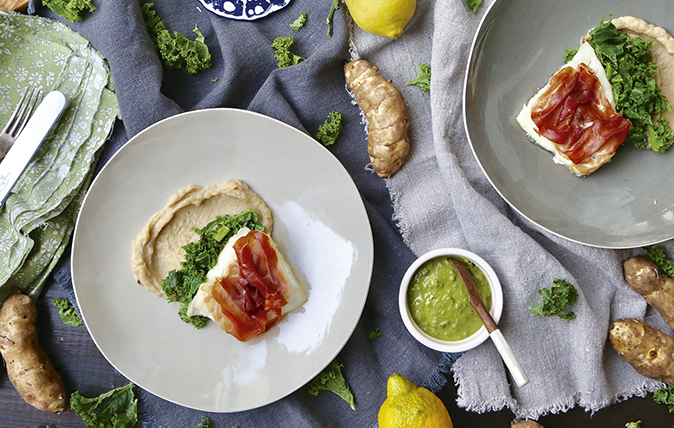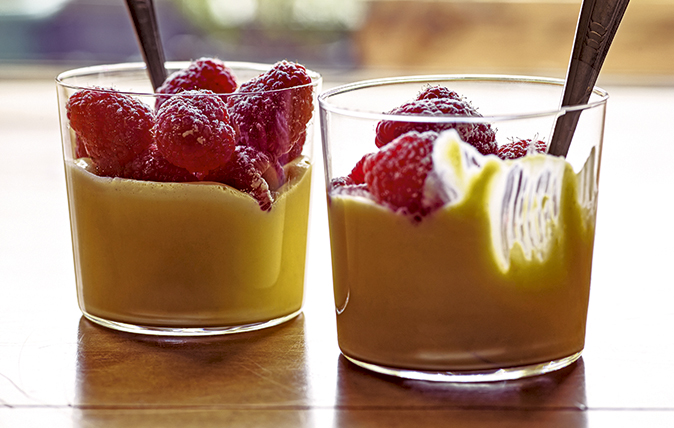Perfect pork recipes you won’t be able to resist pigging out in over the winter months
Simon Hopkinson reminisces about a childhood holiday in France which left him with a love of charcuterie food that lasts to this day.


My last Continental holiday with my parents, when I was 16, was taken in France in 1970. Ostensibly a motoring and camping trip in Dad’s comfy Renault 16 with a tent and sleeping bags in its roomy boot, there was also a vague promise of ‘a couple of nice hotels here and there, where the cooking will be worth the stay’ from Mum.
To be honest, I suspected that she had been as keen as I for this to be more than ‘perhaps a couple’.
Most creditably, the parents had recently become quite excited over my growing love of cookery, so this trip was both a pleasure for them (they had always enjoyed fine French food and had passed it on) and an education for me. Voilà – gagnant-gagnant!
We were treated to some wonderful restaurants in the Loire Valley on nights where we found one of those hotels, but for our under-canvas food we headed to the nearest and best charcuterie. There would be splendid hams, mosaic-like terrines, smooth, pink pâtés and salads – both grated carrot and celeriac in mayonnaise were soon to become firm favourites.
There were cold vegetable dishes, too: tiny mushrooms in an oily tomato sauce, green beans or artichoke hearts in vinaigrette and tiny onions stewed to a sweet- and-sour stickiness. Also, the most wonderful crisp radishes still with their green stalks attached. My eyes were on stalks, too.
Most of the above, together with baguettes, a wedge of pale, fresh butter wrapped in waxed paper and some cheese, would usually adorn our lunch table under the shade of a useful plane tree, along with a couple of bottles of cold Kronenbourg for Dad and a glass or two of chilled Anjou for me and Mum. One may take this kind of lunch for granted now, but let me tell you that this particular picnic was a new treat for this burgeoning teenage cook.
And then there were the réchauffeés (cooked dishes to reheat), too. One of these, in particular, had caught my eye: ‘petit salé aux lentilles’, as the little enamelled label indicated. My kitchen-French voice asked, the prim charcutière answered ‘salty pig with lentils’ or some such.
Exquisite houses, the beauty of Nature, and how to get the most from your life, straight to your inbox.
‘And you will need mustard’, she insisted with a kind smile, plonking down a small jar of Dijon as Dad re-counted his francs. A hot supper under canvas had never tasted so good.
Salt pork with lentils
Serves 4
For the picture above, I took the trouble to make my own salted belly pork, which was very nice indeed. However – and I really mean this – the dish will be equally good made using a generous length of streaky bacon. Please don’t be tempted to use smoked bacon as its prominent ‘fume’ would be quite wrong, here. Seek out a trustworthy, local butcher who knows his bacon of the old school.
Ingredients
- 1.5kg–1.8kg piece of unsmoked streaky bacon, skin intact
- 2–3tbspn olive oil
- 1 finely chopped onion
- 1 large, finely chopped carrot
- 2 finely chopped sticks celery
- 1 large, mild red chilli, de-seeded and finely chopped
- 350g Puy lentils, preferably
- 25g butter
- 1 small clove garlic, crushed to a paste
- A splash of red-wine vinegar
Method
Put the bacon in a pot that will hold it snugly. Cover with 1½ litres of water and bring up to a simmer. Skim off any froth, poach for 30 minutes and switch off the heat.
In another pan, heat the oil and in it quietly fry the chopped vegetables and chilli until lightly coloured. Tip in the lentils and cover with about a litre of the bacon water. Bring up to a simmer and cook for about 20 minutes. Reintroduce the bacon and continue to stew all together for a further 15 minutes or so, until the lentils are tender – add a little more water if necessary.
Lift out the bacon onto a chopping board, then stir the butter, garlic, vinegar and seasoning into the lentils. Tip them onto a hot serving dish, slice the bacon thinly and place on top of the lentils. Eat with plenty of mustard.
A piquant, juniper cream sauce to serve with cooked ham
Serves 4
Elizabeth David’s loyal readers may well recognise the prosaic recipe title above as that of Le Saupiquet des Amognes. The latter is an old French community lying between the town of Nevers and the Morvan region (particularly famous for its hams) of central France and the former is originally believed to be a contraction of ‘salt’ and ‘piquant’.
However, it is this beautiful sauce that you need to know about, more than that which it may anoint – apart from the traditional ham, it is also a happy lubrication for rabbit, pheasant, quail or pot-roasted veal, perhaps.
Ingredients
- 4 peeled and finely chopped shallots
- 100ml white-wine vinegar
- Several crushed juniper berries
- 3 roughly chopped sprigs tarragon
- 200ml white wine
- 30g butter
- 1tbspn flour (level)
- 275ml hot stock (ham broth, poultry or veal)
- 200ml double cream
- A little salt and freshly ground white pepper
Method
To make the sauce, put the shallots, vinegar, juniper berries and tarragon in a small, stainless-steel saucepan. Simmer together until the vinegar has all but boiled away to nothing. Add the white wine and reduce by about a third, then put to one side.
In another saucepan, melt the butter and add the flour. Mix together with a wooden spoon and cook very gently, stirring slowly over a low heat for a few minutes, until it turns pale golden in colour.
Gradually add the stock to the roux, whisking after each addition, until the sauce is perfectly smooth, then strain the shallot/vinegar/wine reduction into this and bring all to a gentle simmer. Cook for a further 10 minutes over a very low heat to harmonise the flavours and ‘mellow’ the sauce. Finally, add the cream and seasoning, whisk together and simmer for a couple of minutes more or until the sauce is velvety and a beautiful ivory colour.

Credit: Melanie Johnson
Slow-roasted, gooseberry-stuffed rolled pork belly with gooseberry relish
Gooseberries should be enjoyed in both savoury and in sweet dishes.

Credit: Melanie Johnson
Jerusalem artichoke and black garlic mash with cod, kale, Parma ham and kale pesto mayonnaise
Jerusalem artichoke is a quirky little vegetable.

Credit: Jason Lowe
Recipe: Simon Hopkinson's raspberries and custard
Simple and sublime: chilled custard and sweet raspberries make a great pudding.

Credit: Jason Lowe
Recipe: Simon Hopkinson's Le Mont Blanc meringue cake
Surrender to this sinful meringue pudding.
